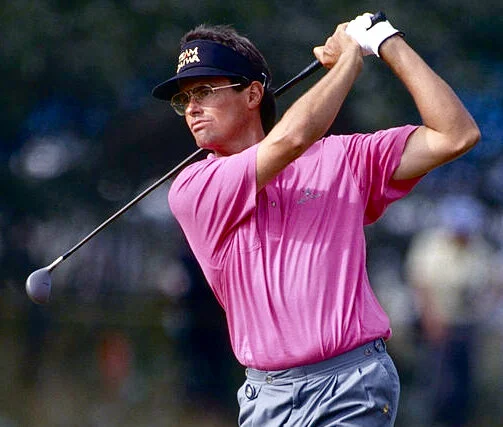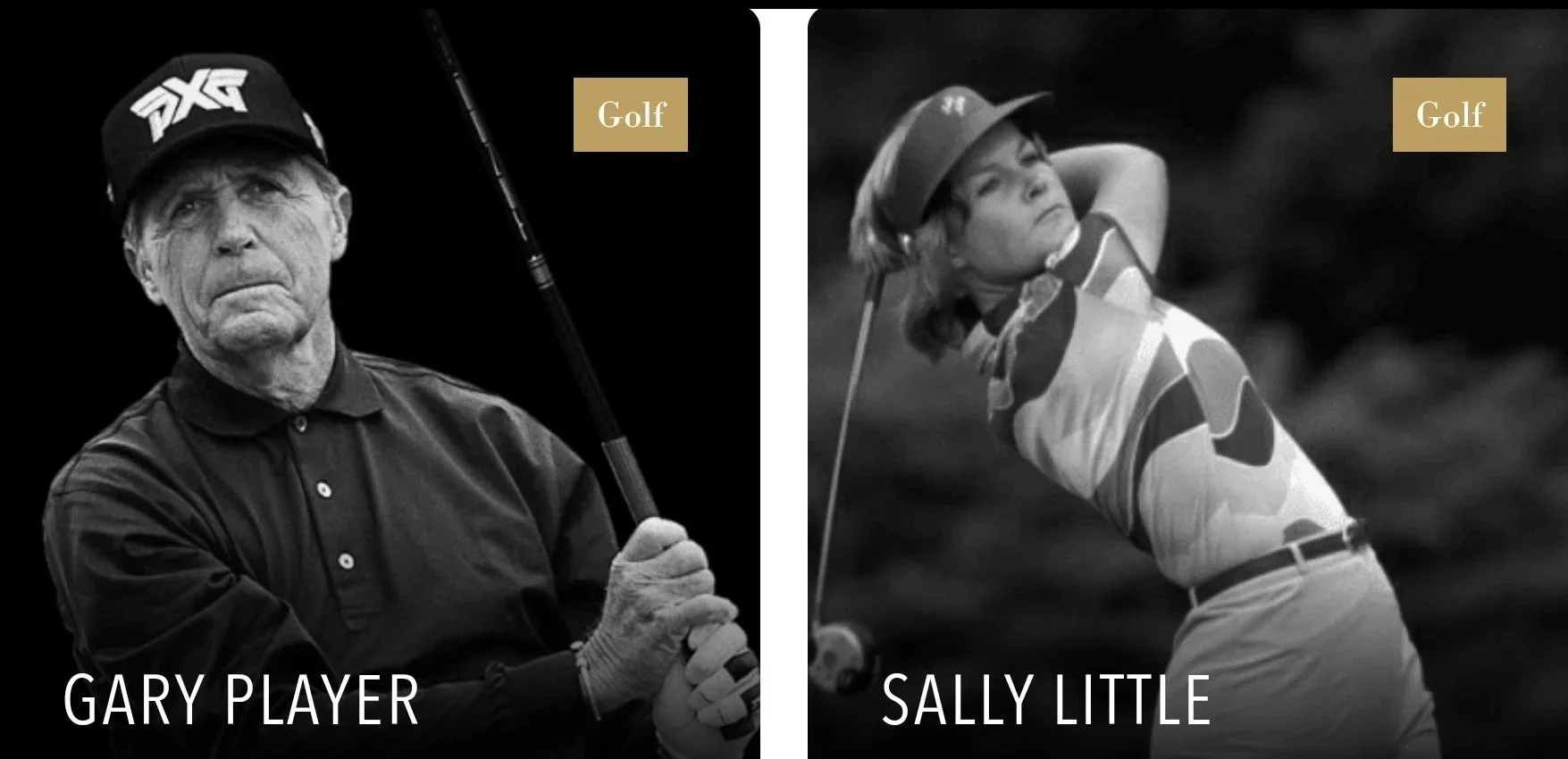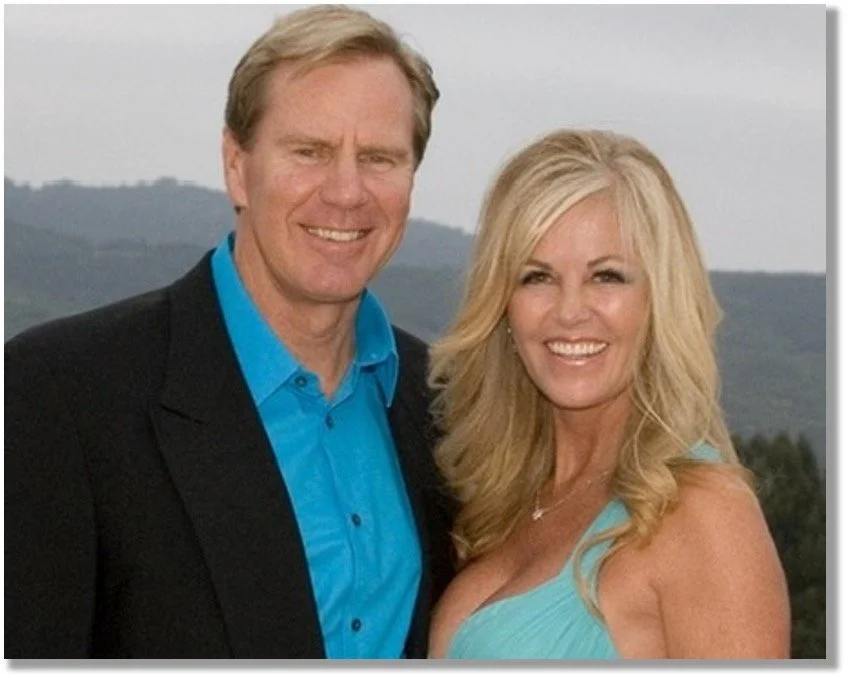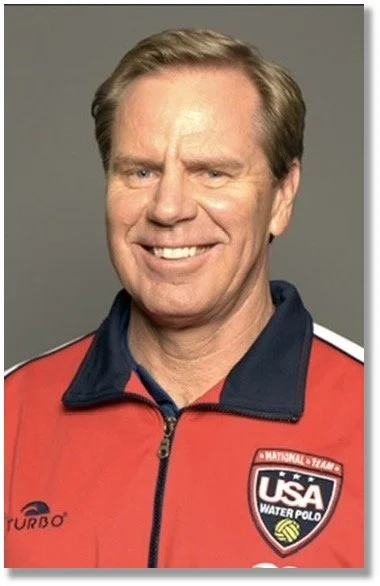ZONE ACCESS SYSTEM™
From their extensive experience with some of the great champions they’ve had the opportunity to work with, Anthony Hirschman and Richard Wickline have identified what exactly the Zone is in scientific terms and how to access it at will. Getting into this seemingly elusive mental state necessitates a combination of using specialized breathing techniques in oxygen-rich environments along with Circulation Training .
There are other ways to get into the Zone as well, specifically using devices that slow down brain waves until they reach the level one gets into just before sleep. The key is to MAINTAIN ALERTNESS in this very relaxed and generally drowsy state, something increased blood circulation and breathing exercises in the correct environment help to do.
There will be a further discussion about the Zone in the “Beyond Intensity” section at the end of this presentation.
Zone Access System Effectiveness
As previously mentioned in the Champions Gallery section, golfer Ian Baker-Finch had been In position in the final round to win the British Open on two separate occasions (1984 and 1990) and could not handle the pressure, losing by 8 and 7 strokes.
His use of the Zone Access System during the 1991 British Open catapulted him to the championship. As a token of his appreciation, Ian gave Anthony Hirschman his historic final round scorecard, which included a “29” score on the front nine holes.
A video is available showing Baker-Finch in the Zone while winning the British Open. If you would like to view this video:
In this photo, Baker-Finch is clearly in the Zone...on his way to winning the British Open Championship after coming so close on a couple of previous occasions. When five-time British Open Champion Tom Watson first set that tournament’s final two-round scoring record in 1977, he beat Jack Nicklaus by one stroke...and the rest of the golfers by 11 strokes. That's how dominant those two players were versus everyone else in the field.
Baker-Finch tied Watson's British Open score for the lowest final two rounds by a champion, a record that has remained intact for 46 years. As of 2025, Watson and Baker-FInch still share the record.
INTENSITY CURVE
The light wave graph and the performance analysis of the peak offer the following insights: Not being alert and energetic enough yields a state of disinterest, often referred to as BOREDOM or “being flat.” Too much intensity sometimes shows up as anxiety or expectation, which puts the mind into a panic state. The result can be mental, emotional, or physical EXHAUSTION…ultimately leading to failure in reaching one’s goals. When the pressure of competition gets the athlete UP energetically and emotionally in the perfect combination, PEAK PERFORMANCE naturally occurs. The athlete’s Comfort Zone is Stretched, which results in achieving a new and higher level of success…which is what the peak of the bell curve represents.
What follows shows these principles in action, especially the results OPT has achieved specifically in professional golf.
SPECIAL ACKNOWLEDGEMENT: Anthony Hirschman and Richard Wickline would like to thank Andrew Martinez for his contributions to OPT’s research over the years. Martinez is a highly accomplished professional golf caddie. A strong case can be made that he’s had more success over a longer period of time than any caddie in modern pro golf history.
His impact on Hirschman, Wickline, and their research has been immense. Martinez was able to effectively communicate the lessons he’s learned from over 50 years as a caddie at the highest level to OPT. In addition, he’s introduced Hirschman to several important professional golfers (such as Jack Nicklaus), as well as pointing OPT in the right direction to various non-golf clients…most notably, Pete Sampras and Vernon Davis.
The two researchers’ first attempt at inducing the Zone upon demand turned out better than expected. Their first research subject, Sally Little, is pictured right next to the great Gary Player on the South African Hall of Fame website. Tom Lehman (in the orange golf shirt) is one of those rare athletes who performed better later in his career than earlier. His longevity and subsequent success was due, in part, to his caddie’s use of mental training techniques. “Super Caddie” Andrew Martinez (holding the flag) helped his player become the best golfer on the Champions Tour (50 years old and over) by keeping Lehman’s “Eye On The Prize.” That focus resulted in a historic Tour Championship victory in 2012, when Lehman had consecutive rounds of 62 and 63. They were In The Zone…FOR SURE!
SHE OWNS THE ZONE: Anthony Hirschman and Andrew Martinez collaborated on their initial “Zone Experiment” in 1988. That is the year when they worked with a South African golfer, Sally Little, who had not won a tournament of any kind in over six years. In their first event working together, Ms. Little won a major tournament, the Canadian Open…and shot a course record (65) along the way. Little, with that victory added to her one previous major championship eight years earlier, eventually becoming the only female golfer ever voted into the South African Hall of Fame. Not that country’s Golf Hall of Fame, or the Sports Hall of Fame. The Hall of Fame for ALL fields of endeavor, of which there are only 43 members. One of them is the most legendary golfer in the history of South Africa, Gary Player. He is currently tied for fourth all-time in major tournament victories (9) on the PGA Tour.
Player has the same number of majors as Ben Hogan, one of the greatest American golfers ever. By being put on the level of Player, Sally Little has become an all-time great…in her country and in her sport.
The Hirschman-Martinez collaboration continued into the next decade. Andrew Martinez was instrumental in connecting Anthony Hirschman with Ian Baker-Finch. Baker-Finch’s caddie, Pete Bender (who also won the British Open working with Greg Norman), is a longtime friend of Martinez’.
The results of that test were astounding, as Baker-Finch tied one of the longest standing scoring records in the world’s oldest major golf tournament (Tom Watson’s lowest final two rounds in British Open history).
In their next research phase together, Hirschman worked as a consultant to Martinez in 1996, when he was workingwith golfer Tom Lehman. Lehman had finished in the Top 3 four times the previous four years in major tournaments, with no victories…including losing the U.S. Open in 1996 on the 72nd hole with a bogey. Often, golfers suffer heartbreaking defeats in majors and never recover. Using an array of mental skills techniques he had learned from some of the greatest athletes in American sports history, Hirschman shared with his caddie research partner various ways to view the defeat…particularly as a “stepping stone” to the next level of success.
There was some customized mental support…what might be called a “fuel injection of encouragement” …that Martinez gave his golfer just before the start of the British Open, the next major after the U.S. Open in 1996. The communication between caddie and golfer is recorded in a book about several caddies’ contribution to their golfers winning the British Open. The book is entitled, “How We Won The Open.” Lehman did indeed win that British Open. Along the way, he broke the all-time scoring record for the lowest first three rounds (in a tournament that dates back to 1892, when it was first played as a four-round contest).
Lehman went on to win the Tour Championship that year, the Money Earning Title, and was voted PGA Player of the Year. He even achieved the status of World Number 1 for a short time.
Sticking with Martinez for the next two decades, Lehman again did something unusual…winning two Champions Tour Players of the Year awards in 2011 and 2012. Lehman gave the trophy he won as the Champions Tour’s Leading Money Winner (called the Arnold Palmer award) to his caddie. That was a just reward for Martinez’ loyalty and great skill during his many years of service to his player up to that point in time.
EXPERIENCE IS THE BEST TEACHER: Andrew Martinez has caddied for golfers who have won major championships on the PGA and LPGA Tours, the Champions Tour (with Tom Lehman), and the U.S. Amateur (in 1999, with David Gossett). Martinez’ greatest opportunity to learn about the Zone was something he accomplished over 20 years before he first met Tom Lehman.
Here’s Andrew Martinez, back in the day, caddying for the great Johnny Miller. The times have changed…and so has Mr. Martinez’ sense of style. But his intensity hasn’t. In fact, it appears in this photo that the caddie and his golfer have gone BEYOND INTENSITY…and into The Zone.
Drs. Terry and Lori Schroeder are the primary health care professionals who consult with OPT Research Systems.
They are a husband-and-wife chiropractic team who have each been practicing for almost 40 years. Their interest and expertise, besides working with patients' structural imbalances in their musculo-skeletal system, is to provide what they call "innovative solutions for enhanced vitality and energy." They are, in fact, specialists in determining where there are energetic restrictions in the body. They use various modalities to open those blockages (should have a link to their website)...and have written a comprehensive book about the subject, entitled "The Power Of Living In Alignment."
Drs. Terry and Lori Schroeder
Terry Schroeder has a most unique background for someone as involved in the healing arts as he is. Schroeder became a star water polo player while in college at Pepperdine, making the U.S. Olympic team just after graduation. A boycott prevented the United States from competing in the 1980 Olympics. By 1984, Schroeder was ready and reloaded.
He was designated Captain of the American team. That group of players, and his team in the next Olympics (1988), narrowly missed winning gold medals...capturing the team silver medal for the U.S. both times.
He then accomplished a rare feat, turning his success as a competitor into a coaching career spanning four decades. Schroeder coached at his alma mater, Pepperdine, since the mid-1980's until 2023, capturing an NCAA Title in 1997.
He was also the Head Coach for the U.S. Olympic team that won a silver medal at the 2008 Beijing Olympics. Those three silvers that Schroeder won as a player and as a coach remain the highest finishes ever for the American Water Polo team at the Olympic Games.
Dr. Schroeder has had three of the most special honors ever afforded an Olympic athlete. He was chosen by the captains of all the various U.S. teams to carry the American flag in the closing ceremonies of the Seoul, Korea Olympic Games in 1988.
Heading into the 1992 Olympics, Sports Illustrated did a feature article on him, entitled "The Consummate Olympian." The writer of the article, Kenny Moore, was primarily a track and field correspondent for the magazine. For a water polo player to supplant track and field stars in America's biggest sports-centric magazine is quite an accomplishment.
ANDREW MARTINEZ’ HISTORY OF SUCCESS dates back to the early-1970s, when he began caddying for Johnny Miller. They tied a record in 1974 that lasted for 50 years (1950-2000), when Miller won eight times. The two other golfers with that many wins during that stretch of time, Arnold Palmer and Tiger Woods, are considered among the greatest in men’s professional golf history. Miller won the 1973 U.S. Open with a final round score of 63, the record for a U.S. Open Champion that is still standing a half century later.
Andrew Martinez’ insights about what makes the best golfers who they are on a mental level started during this time period working with Johnny Miller. This first-hand experience led to his unprecedented run of success later on, beginning with Sally Little and extending a quarter century later to Tom Lehman on the Champions Tour.
Johnny Miller winning PGA Player of the Year honors in 1974 and Lehman earning the same award 22 years later are accomplishments for a caddie that may never be matched. No wonder Martinez was inducted into the Caddie Hall of Fame in 2016.
Anthony Hirschman worked briefly with Johnny Miller in 1987, which was early in his research career investigating and assisting professional athletes. In fact, it was Miller who personally introduced Hirschman to Jack Nicklaus at the end of that same year. Hirschman also worked as a consultant at various times to Andrew Martinez during the caddie’s lengthy association with Tom Lehman.
During the almost 40 years of their research collaboration, Hirschman learned the secrets of concentration under pressure from Martinez…someone who caddied for two golfers who both won British Opens and also were PGA Players of the Year. Lehman won his second consecutive Champions Tour Player of the Year Award almost 40 years after Johnny Miller won his PGA Player of the Year award (2012 and 1974, respectively).
It’s mind-boggling that one person…Martinez…could have that kind of success at the highest level of global professional golf for so long. It can be safely said that Andrew Martinez has seen and done it all as a caddie in the great sport of golf.
How to consistently emerge victorious in the “heat of the battle” is the primary subject matter that Andrew Martinez has been exploring with Anthony Hirschman (and with Richard Wickline over the last 15 years) during the almost four decades they’ve been conducting research together.
Mastering one’s emotions is a highly-specialized skill, one that can be taught and cultivated.
Please inquire (using the Contact information on this website) to be sent the Ian Baker-Finch British Open Championship Video. That 17-minute video will give the viewer a prominent example of how one golfer, formerly someone who had extreme trouble managing pressure, was able to effortlessly “hold it together” when it mattered most…to the point where even Jack Nicklaus himself was truly amazed. Nicklaus, the golfer with the most major tournament victories, said as much during his color commentary on ABC’s 1991 British Open golf telecast. It takes a lot to impress Jack…and Baker-Finch did just that on the 15th hole of the final round. Usually seeing is believing…yet, even Nicklaus could scarcely believe what he was seeing.
Hirschman, Wickline, and Martinez will continue to share what it takes to be the best with whomever is talented, open-minded, and READY TO PUT THOSE LESSONS INTO ACTION.
In addition to his feature article in the 1992 pre-Olympic edition of Sports Illustrated, Schroeder also showed up in a Special Edition of "Sports Illustrated For Kids."
Terry Schroeder was Olympic Team Head Coach in 2008-2012
To top it all off, Terry Schroeder's image and likeness (his body...not his head) was made into a statue and adorns the top of the L.A. Coliseum, where it has been a fixture since he won his first-ever medal at the Los Angeles Olympics over 40 years ago.
As the Olympics returns to the same location in 2028, that statue will be talked about up to and beyond the L.A. Olympics. It’s a fitting tribute to Dr. Terry Schroeder…who as an athlete, coach, and health practitioner has brought vitality and joy to those fortunate enough to know him as has his wife, Dr. Lori Schroeder.











